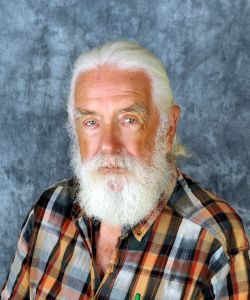 Marine Science Institute research associate Tony Amos has spent more than 25 years surveying the gulfside beaches of Mustang and San Jose Islands, monitoring the effects of weather and garbage on the fragile dunes. As he scans the horizon, he often finds injured birds, turtles, and other creatures. A veritable Dr. Doolittle to the swimming and flying wounded around Port Aransas, Amos scoops the animals into his beachworthy “ambulance” and transports them to the Animal Rehabilitation Keep (ARK) at The University of Texas at Austin's Marine Science Institute.
Marine Science Institute research associate Tony Amos has spent more than 25 years surveying the gulfside beaches of Mustang and San Jose Islands, monitoring the effects of weather and garbage on the fragile dunes. As he scans the horizon, he often finds injured birds, turtles, and other creatures. A veritable Dr. Doolittle to the swimming and flying wounded around Port Aransas, Amos scoops the animals into his beachworthy “ambulance” and transports them to the Animal Rehabilitation Keep (ARK) at The University of Texas at Austin's Marine Science Institute.At the ARK, injured turtles receive veterinary care and respite in special holding tanks with recirculating seawater. There's an aviary for birds with broken wings and other facilities for the various raccoons, possums, bats, cottontail rabbits, skunks, and other small mammals that check into the ARK from time to time.
The goal is to rehabilitate the animals and return them to the wild. In the two-and-a-half decades that Amos has been running the rescue mission, more than 700 sea turtles have been treated and more than half have been released.
“That's what it’s all about – being able to release the turtles," Amos says, describing how he and his associates ferry the reptiles out to sea on the institute’s research ship the RV/Longhorn. “Our goal is to release every animal we receive.”
The ARK also cares for large sea and freshwater birds, including pelicans, loons, gannets, boobies, cormorants, gulls, terns, herons, and egrets. About half of them can be rehabilitated and returned to the wild.
Most of the creatures, regardless of their species, are injured because of some kind of human activity. Birds often get caught in fishing lines or hit by vehicles on beaches or the roadside. Turtles can fall victim to fishing lines as well as shrimp trawls and boat propellers. Sometimes the animals have been hurt deliberately.
It's a costly mission of mercy. Each month, the ARK purchases 1,700 pounds of fish to feed its patients. There are also veterinary bills and salaries for three part-time workers who clean the tanks, feed the animals, and keep the ARK in working order.
Until recently, the day-to-day operations were funded by occasional donations from concerned individuals. That changed in March when an anonymous donor provided the seed money to fund the Anthony F. Amos Endowment, which will support the ARK’s operations, maintenance, and other needs. Fundraising efforts are currently under way to build the endowment.
In addition to animal rescue, Amos, his staff, and 25 volunteers host tours for area schoolchildren. He also writes a weekly column for the Port Aransas newspaper about the ARK’s colorful and constantly changing residents.
Amos, who speaks with a winning British accent, was born in London and studied oceanography in Bermuda, where he moved at age 17. He worked for Columbia University’s Lamont Geological Observatory (now the Lamont-Doherty Earth Observatory) before moving to Port Aransas in 1976 with his wife Lynn, who was offered a position at the Marine Science Institute. Amos is a research associate at the institute as well as director of the ARK.
Over the years, Amos and UT students have amassed information on weather conditions, seawater salinity, and other factors that contribute to aquatic life becoming stranded on the area's beaches. In one study, a student researcher found that more than half of the dead sea turtles that washed up on shore had ingested some form of plastic garbage.
Many of the creatures that the ARK rescues and rehabilitates are endangered or protected, and Amos is proud of the work the ARK has done to preserve these species.
"These creatures are the essence of our coastal environment," Amos says. "The coast wouldn't be the coast without the pelicans and the laughing gulls. They're all wonderful animals."
Sheila Allee








